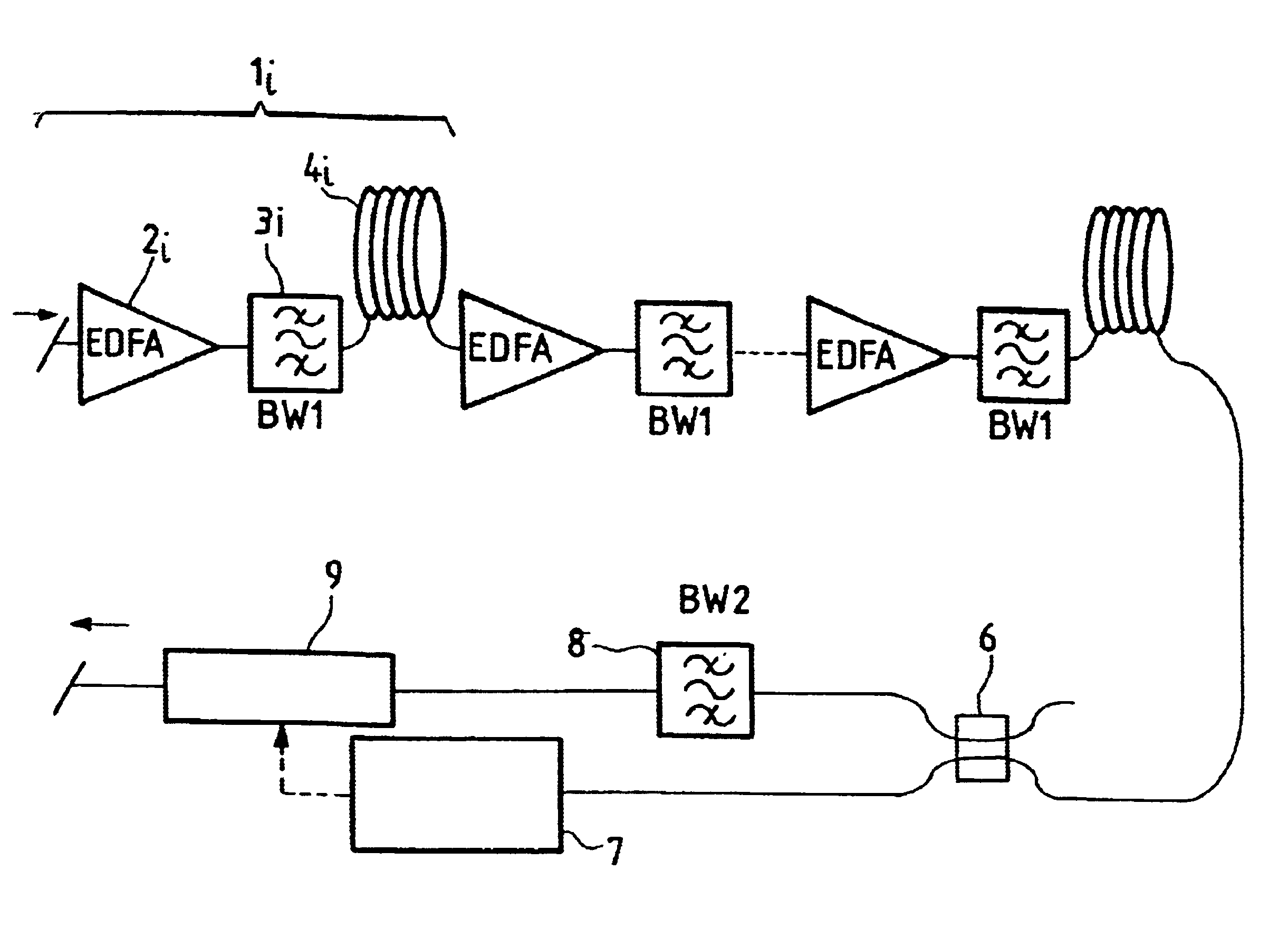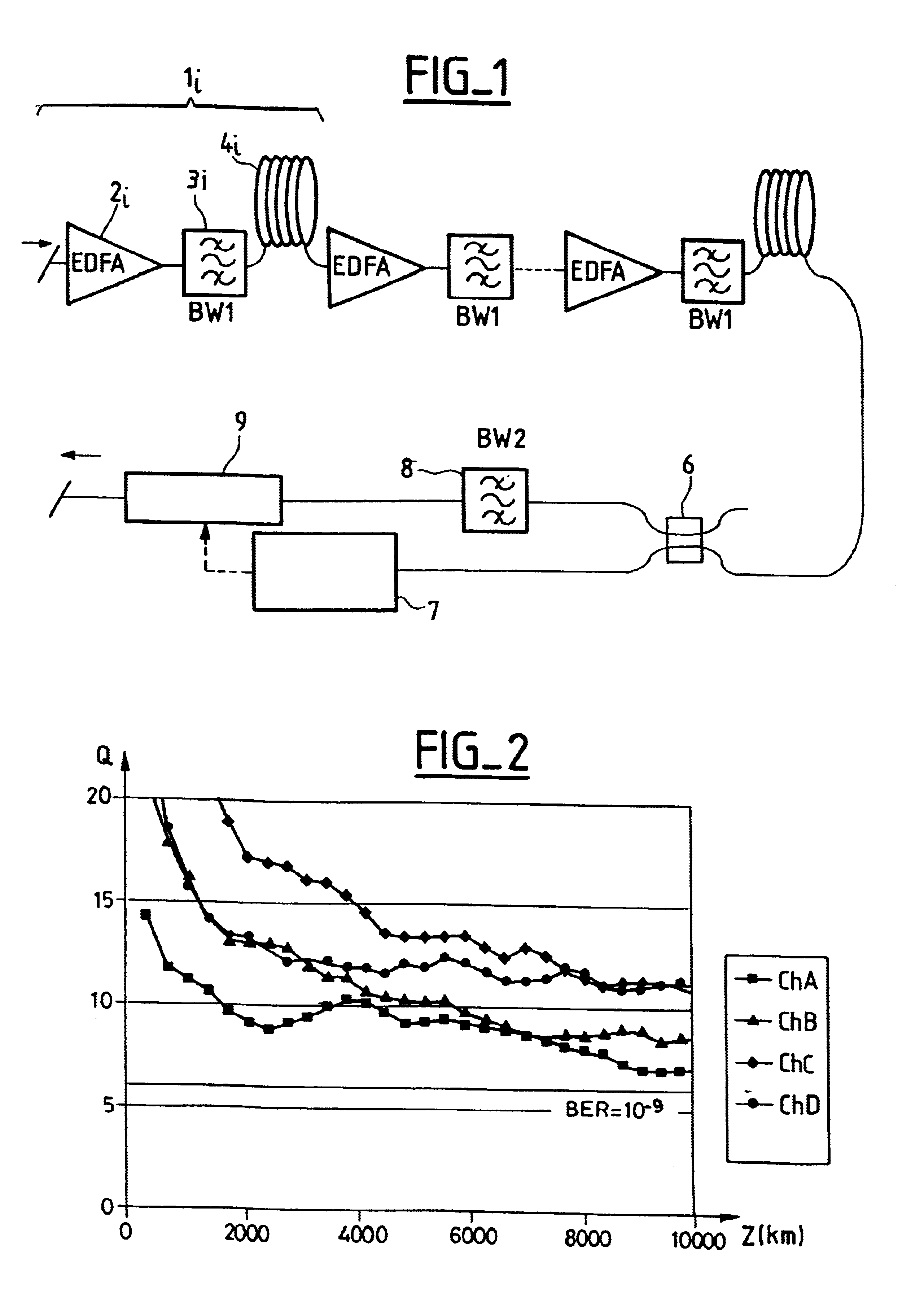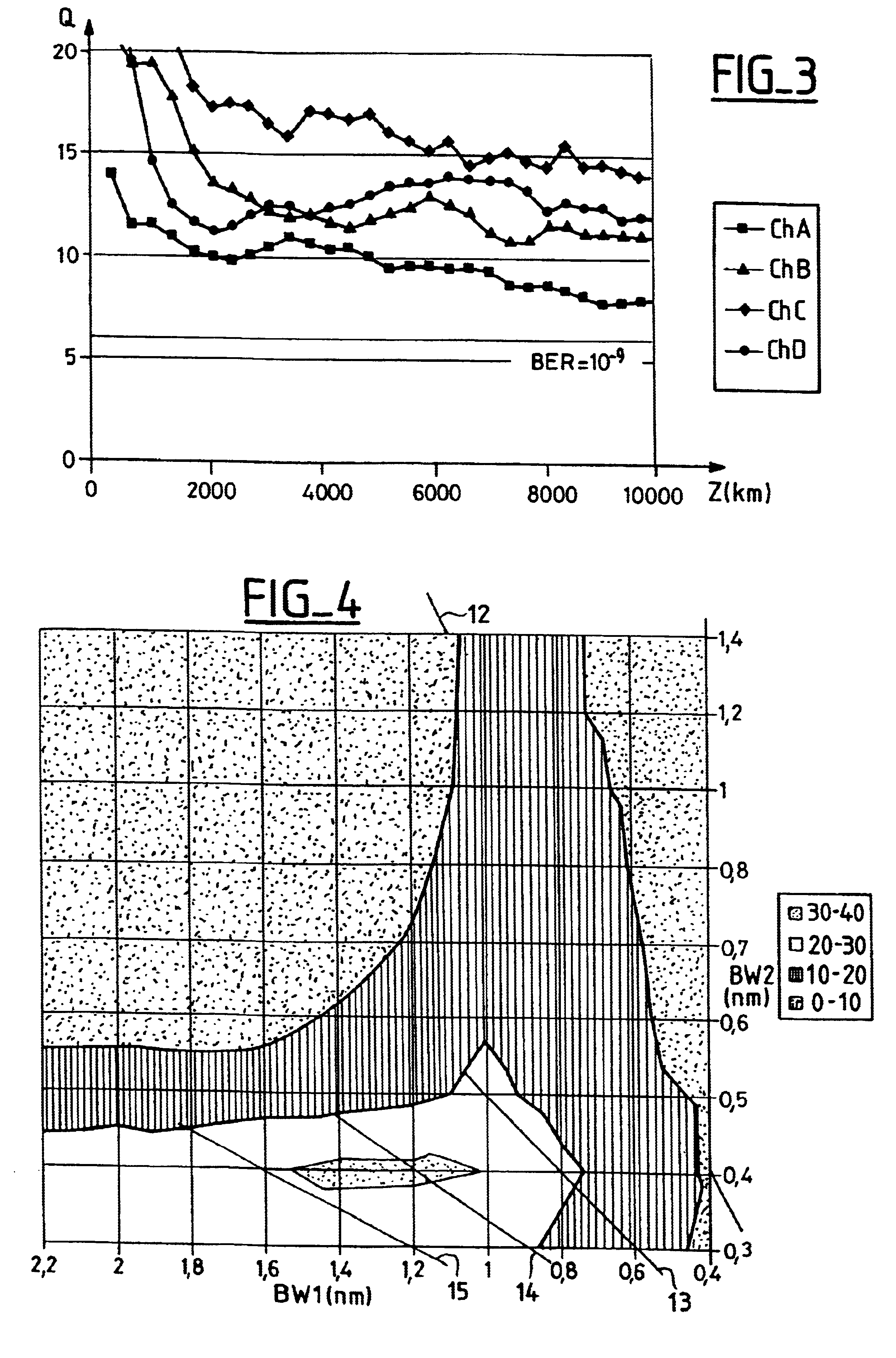Double filtering fiber optic soliton signal transmission system
a transmission system and fiber optic technology, applied in the direction of fibre transmission, distortion/dispersion elimination, electrical equipment, etc., can solve the problems of affecting multiplexed soliton signals, imposing a theoretical limit on the quality or bit rate of soliton transmission, and using synchronous modulators, so as to reduce amplitude fluctuations, reduce noise, and limit time-jitter
- Summary
- Abstract
- Description
- Claims
- Application Information
AI Technical Summary
Benefits of technology
Problems solved by technology
Method used
Image
Examples
Embodiment Construction
The invention applies in particular to a wavelength division multiplexed fiber optic soliton signal transmission system. It is described hereinafter with reference to a system in which the wavelengths of the multiplex are chosen to assure a relative slip between the channels substantially equal to a multiple of the bit time in a given interval. However, it is not limited to a transmission system using this kind of frequency allocation scheme, and applies more generally to any wavelength division multiplexed soliton signal transmission system.
The example described can use the wavelength allocation solutions described in the articles by E. Desurvire and O. Leclerc referred to above, which are particularly pertinent with reference to the wavelength allocation schemes. One such wavelength allocation scheme assures, at regular intervals Z.sub.R along the fiber, a relative slip between channels that is substantially equal to a multiple of the bit time.
The problem in a wavelength division ...
PUM
 Login to View More
Login to View More Abstract
Description
Claims
Application Information
 Login to View More
Login to View More - R&D
- Intellectual Property
- Life Sciences
- Materials
- Tech Scout
- Unparalleled Data Quality
- Higher Quality Content
- 60% Fewer Hallucinations
Browse by: Latest US Patents, China's latest patents, Technical Efficacy Thesaurus, Application Domain, Technology Topic, Popular Technical Reports.
© 2025 PatSnap. All rights reserved.Legal|Privacy policy|Modern Slavery Act Transparency Statement|Sitemap|About US| Contact US: help@patsnap.com



